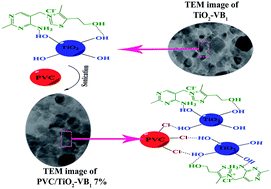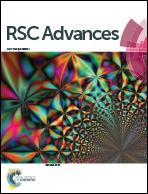Thiamine hydrochloride (vitamin B1) as modifier agent for TiO2 nanoparticles and the optical, mechanical, and thermal properties of poly(vinyl chloride) composite films
Abstract
In the present investigation, TiO2 nanoparticles (NPs) were used for improving the thermal, mechanical and optical properties of poly(vinyl chloride) (PVC) matrix. To prevent the aggregation of TiO2 NPs, surface modification of TiO2 NPs was performed using vitamin B1 as a natural organic molecule with environmentally friendly and inexpensive properties. PVC nanocomposite (NC) films were prepared with different contents of TiO2 NPs via ultrasonic irradiation as a fast method and then the NCs were investigated using various techniques. Transmission electron microscopy images of NC films showed that TiO2 NPs were uniformly placed into the polymer matrix. Thermogravimetric analysis results showed enhancement in thermal stability of all NCs. From mechanical tests it was found that increasing the elongation at break and reducing the Young's modulus lead to increasing toughness of NC films. Water contact angle results indicated that the hydrophobicity of NCs were enhanced with increasing the concentration of TiO2 NPs.


 Please wait while we load your content...
Please wait while we load your content...